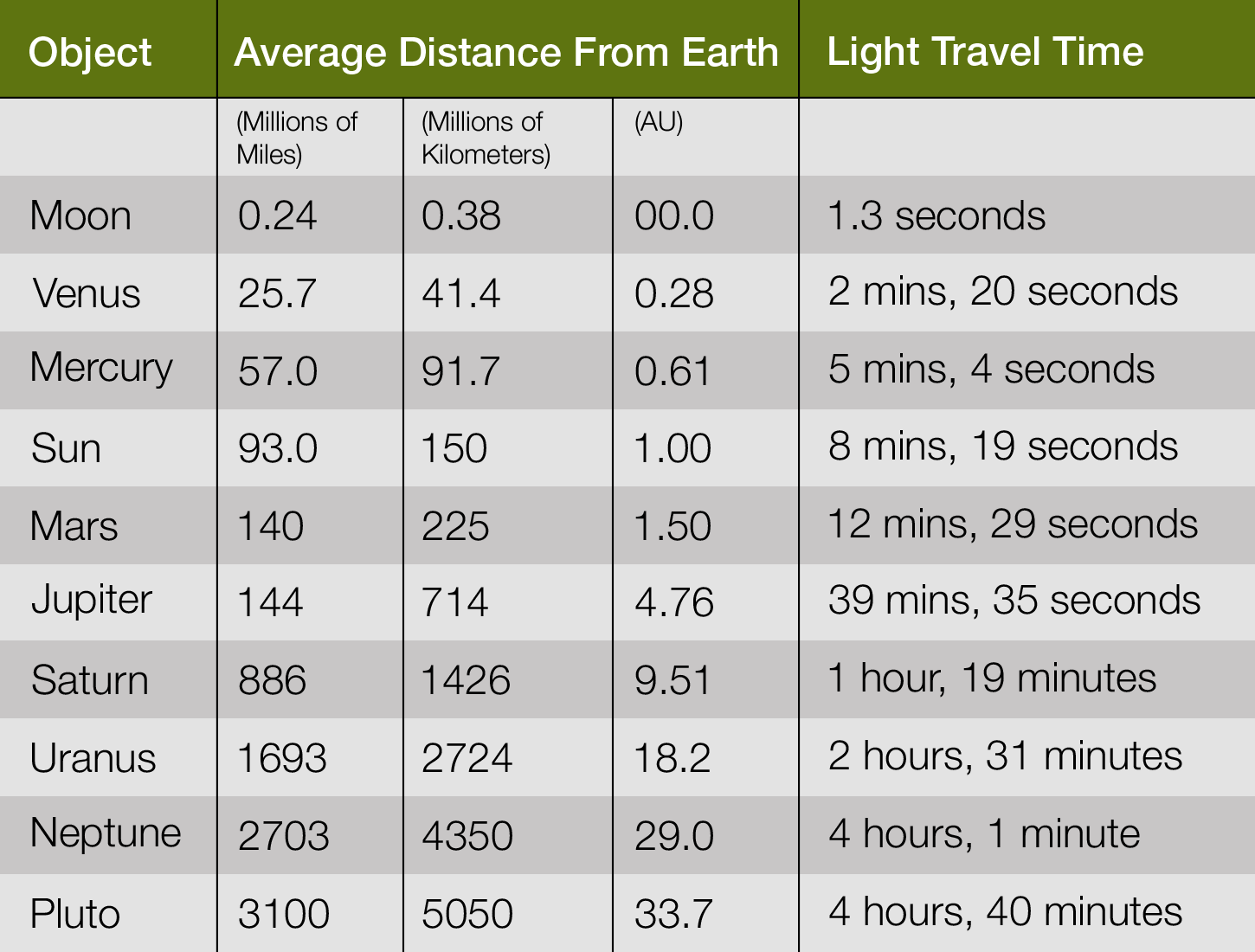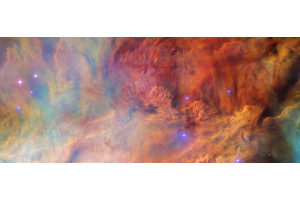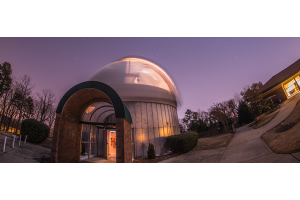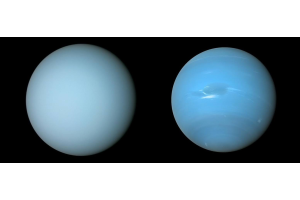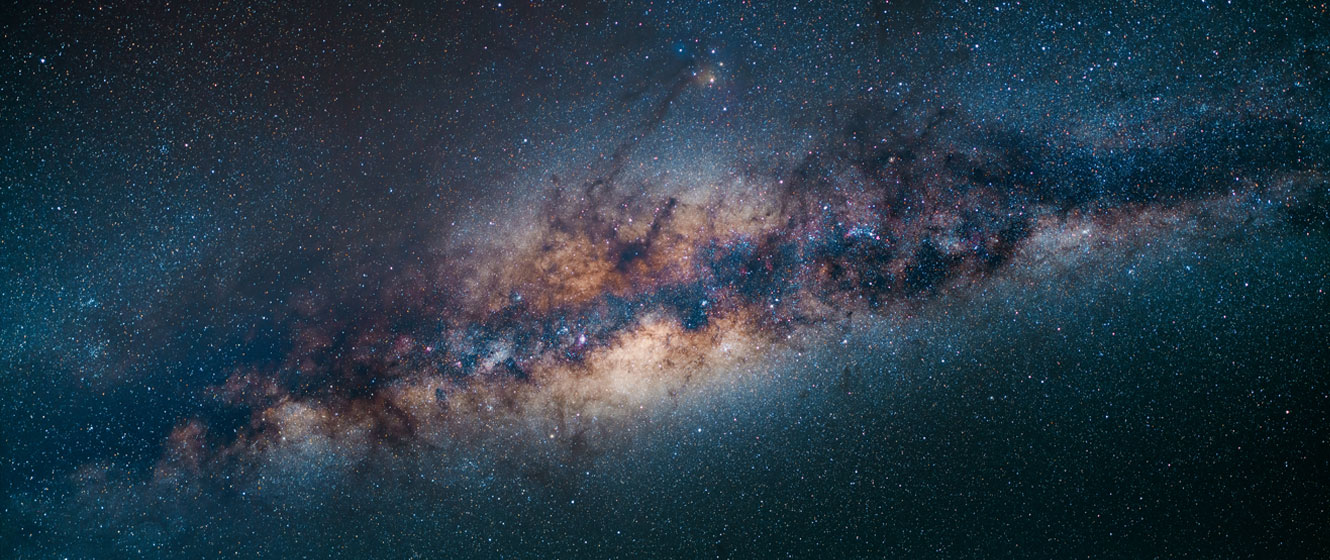
Thanks to sci-fi movies and pop culture, it’s fair to say that almost everyone has heard of a light-year - but not everyone fully understands what that means or how it influences our view of the universe.
A light-year is more than just a measurement of distance across space. It’s also a measurement of distance across time. It’s a strange concept and one that might seem confusing at first, but whenever we look out across the universe, we’re also looking back into the past. So, how are light and time connected? What is a light-year? How far can we see? And are those objects still there?
Are You Living in the Past?
Like it or not, when it comes to the world around us, we’re all living in the past. Imagine you’re at a stadium, watching your favorite football team play, when they score the winning touchdown. The crowd goes wild, and while it might seem as though everyone witnessed the event at precisely the same moment, that’s not entirely true.
Like sound, light doesn’t instantly travel from one location to another; it takes time. So when the football hits the ground and the winning touchdown is scored, the light travels outward and reaches the spectators closest to the touchdown first and the spectators furthest from the touchdown last.
If you’re watching from home, it takes even longer, as the light will need to be converted into data, transmitted up to a satellite, and then beamed back down to either your satellite dish or your local cable network. That typically takes less than a quarter of a second, but you’ll also need to take into account the 7-second delay many networks use for censorship.
But wait, there’s more! Once the light reaches your eyes, your optic nerves send electrical impulses to your brain, which then interprets them as an image. This process takes about a tenth of a second.
All this being the case, there’s simply no escaping it: you are, indeed, living in the past. Even if you’re at the game, you’re behind the times by at least a tenth of a second. If you’re watching the game from home, you’re probably at least several seconds behind. And that’s just for the things that happen here on Earth - what about everything that’s happening out in space?
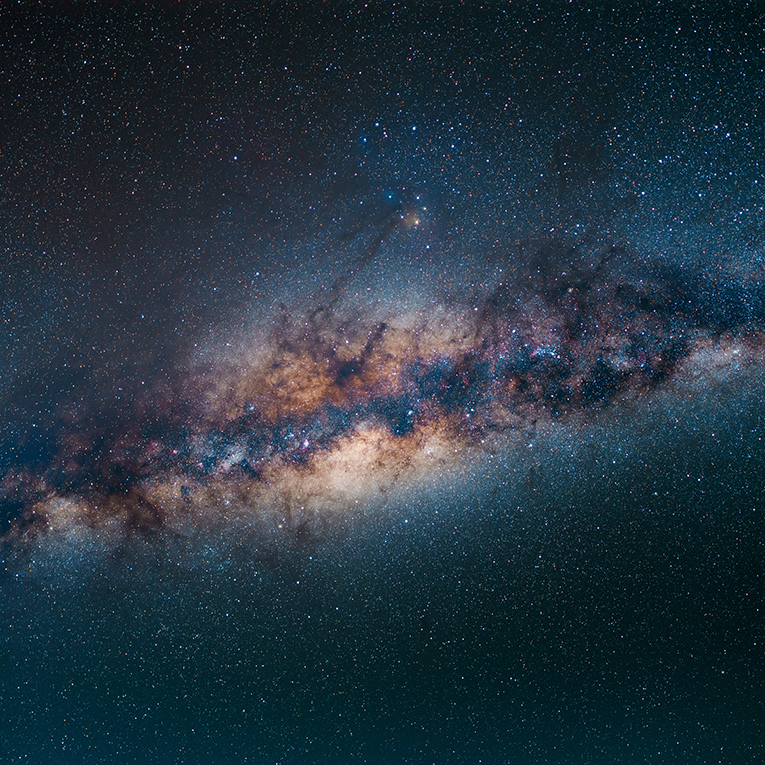
How Fast Can Light Travel?
Light travels incredibly fast. In fact, at a constant speed of 186,000 miles (300,000 kilometers) per second, it’s nearly 900,000 times faster than sound and the fastest thing in the universe. Nothing travels faster than light.
The universe, in turn, is so vast that it’s impossible to measure distances in only miles and kilometers, as the numbers involved soon become meaningless. For example, on average, the distance to the Moon is 238,855 miles (384,400 kilometers), while the Sun is roughly 93 million miles (150 million kilometers) away. Driving to the Moon at 70mph would, therefore, take 3,412 hours, or 142 days, while it would take 155 years, or roughly 400 times longer, to reach the Sun.
(The Apollo 11 spacecraft flew to the Moon at an average velocity of 3,150 miles per hour, allowing the astronauts to make the trip in a little over three days. It would take more than 3 years and 4 months to journey to the Sun at that speed.)
We still use miles and kilometers to measure distance within the solar system, but without any context, the numbers can be hard to grasp. To help with this, astronomers also use the Astronomical Unit (AU). One AU is the average distance between the Earth and the Sun, which certainly helps to put everything into perspective. Knowing that light travels at a speed of 186,000 miles per hour and that the Sun is roughly 93 million miles away, we know that light takes about 8 minutes and 19 seconds to reach us.
In other words, we’re seeing the Sun as it was 8 minutes ago. Things get weirder when we look further afield. On average, Mars is 140 million miles (225 million kilometers, or 1.5 AUs) away, so when we look at Mars through a telescope, we see it as it was more than 12 minutes ago. (This also makes it tricky to control any rovers on the Martian surface in real time!)
Moving on, the distance between the Earth and Jupiter averages 444 million miles (714 million kilometers, or 4.8 AUs), and light from the planet takes nearly 40 minutes to reach us. This is worth thinking about, as the planet takes just 9 hours and 56 minutes to rotate. Consequently, a feature like the Great Red Spot can be invisible from Earth even though it has already rotated into view.

Similarly, imagine you’re observing Jupiter with your telescope, and you’re waiting for Io to reappear from behind the planet. In this scenario, the moon emerges from Jupiter’s shadow nearly 40 minutes before you catch sight of it on Earth. Pause and think about that as you observe the giant planet. What were you doing 40 minutes ago?
The further afield we go, the longer it takes light to reach the Earth, with the light from Pluto taking more than four and a half hours to cross the solar system.
What is a Light-Year?
So far, just within the solar system, we’ve encountered light-seconds, -minutes, and -hours, with slightly more than four hours needed for light to reach us from the most distant planet, Neptune.
However, the solar system doesn’t end there. Pluto resides within the Kuiper Belt, but beyond that, there is the Oort Cloud. This cloud of icy material is the source of the comets that grace our skies from time to time, and it’s huge; the inner edge of the Oort Cloud is thought to be about 3,500 AUs from the Sun, while the outermost edge could be anywhere between 10,000 and 100,000 AUs from the Sun.
Light takes a little more than 20 days to reach us from the innermost edge of the cloud at 3,500 AUs. If the cloud then extends to 100,000 AUs, light from the outermost edge will take 577 days, or a little more than 18 months, to reach us.
Now we’ve made the jump to light-years. Light travels 5.8 trillion miles in a year, but since this number is too large for many of us to comprehend, we use the term light-year instead.
At a distance of 4.25 light-years, the nearest star to the Sun is Proxima Centauri. This red dwarf star is a member of a multiple star system, and while it’s too faint to be seen with the naked eye, you can easily see the largest member of the system - Alpha Centauri - from the southern hemisphere. Although this star system is the closest to the Sun, anyone looking up at it sees it as it was a little more than four years ago. From our vantage point, we have no way of knowing what it looks like right now, at this moment in time.
How Far Back in Time Can You See With the Naked Eye?
You may now be wondering just how far back in time you can see. Could it be tens, hundreds, or even thousands of years? Let’s start with something relatively nearby. Messier 42, the Great Orion Nebula, can be found just below the three stars of Orion’s belt and is visible as a tiny, misty patch to the naked eye - even from suburban skies.
A fine sight through telescopes, this huge cloud of gas and dust is the birthplace of stars and is thought to be about 35 light-years in diameter. In other words, it takes light about 35 years to travel from one side of the nebula to the other.
As for the nebula as a whole, it’s estimated to be roughly 1,400 light-years away. That means you’re looking at it as it was around 600 AD - a thousand years before the invention of the telescope. It may even be that the nebula has given birth to a new star or two in that time.
In terms of star clusters, perhaps the most distant that’s visible to the naked eye is NGC 884, which forms one-half of the famous Double Cluster in Perseus. At a distance of 9,600 light-years, you see it as it was at around 7,600 BCE, when farmers in Mesopotamia were just beginning to cultivate wheat and barley.
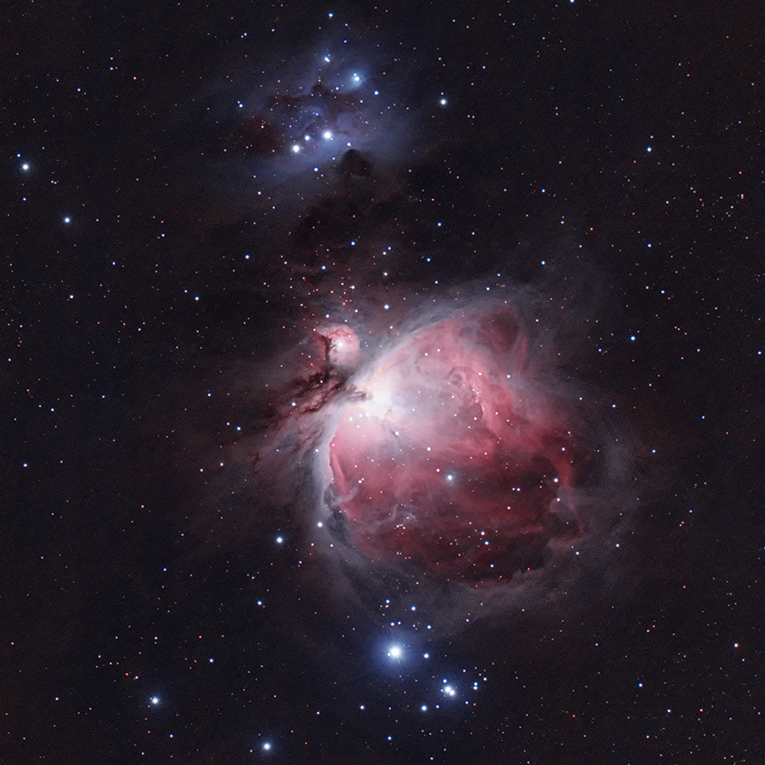
The most distant individual naked-eye star is V762 Cassiopeiae; this red giant variable star glows at magnitude 5.9 when at its brightest, putting it on the very edge of naked eye visibility, and lies at an estimated distance of 16,300 light-years away. If you can spot it (you’ll need to be under very dark skies and know exactly where to look) you’re seeing the star as it was around 14,300 BCE. At around that time, people were beginning to domesticate wolves in China, which should give you paws for thought the next time you pet a dog!
During the summer, we can travel even further back in time. When we look toward the spout of the teapot asterism in Sagittarius, we’re looking at the heart of our own Milky Way galaxy, some 26,000 light-years away. Here on Earth, we were in the middle of the last ice age, and people struggled to keep warm by using fibers to make clothes. Elsewhere, in Africa, others began writing for the first time.
However, that’s nothing compared to the Andromeda Galaxy, which, at a distance of 2.5 million light-years, is the furthest object you can see with the naked eye. That’s nearly 100 times further than the center of our galaxy; can you see another town or city that’s 100 miles away from your own?
You’re looking at the Andromeda Galaxy when the first humans lived in caves or huts and started developing tools to help with their hunting and gathering. In terms of the Earth itself, this was the start of the Paleolithic Period, when the climate started to undergo a series of ice ages, possibly sparked by a supernova that occurred relatively close to the Earth.
How Far Back in Time Can You See With a Telescope?
We’ve gone about as far we can without optical aid, but we can continue to travel back in time with a telescope. When it comes to equipment available to the amateur astronomer, many of the larger aperture scopes are capable of picking up the Coma Cluster of galaxies.
Located some 323 million light-years away, this group of over 1,000 galaxies is more than 150 times further than the Andromeda Galaxy. When the light from these galaxies started on its journey, there were no humans on Earth, and it would be another 75 million years before the dinosaurs appeared. Instead, amphibians were the predominant form of life on land, and you’d want to stay out of the shark-infested waters.
However, the most distant object amateurs can detect is Quasar 3C 273, in the constellation Virgo. A quasar is the very bright core of a galaxy, and this particular one lies 2.5 billion light-years away. Earth, at that time, suffered its first mass extinction event, when bacterium released so much oxygen into the atmosphere that anaerobic life was almost wiped out. While this also helped to form the ozone layer, global temperatures dropped as a result and caused ice sheets to cover the Earth from the poles to the tropics.
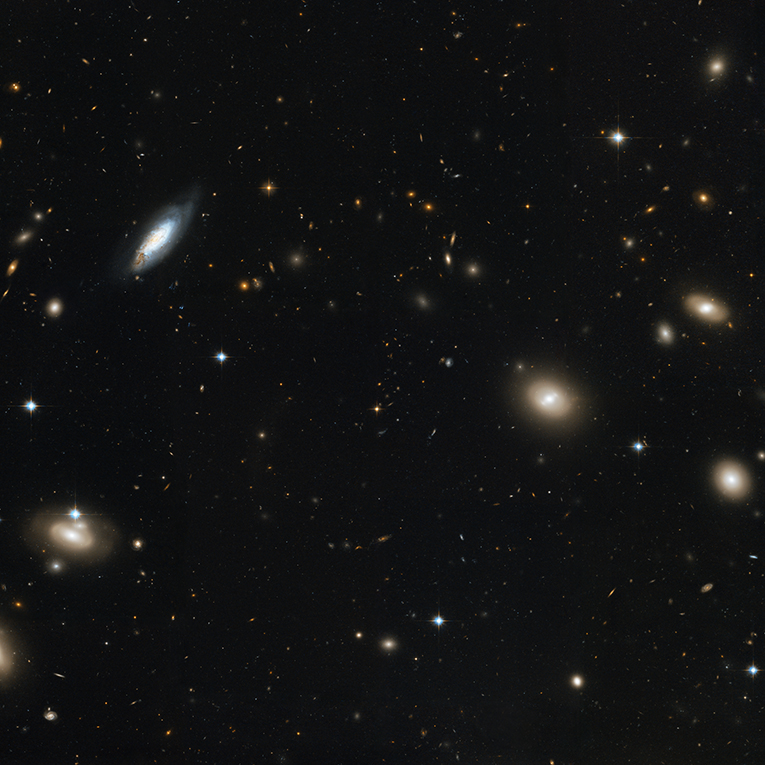
Image Credit: NASA, ESA, and the Hubble Heritage Team (STScI/AURA). Acknowledgment: D. Carter (Liverpool John Moores University) and the Coma HST ACS Treasury
How Far Back in Time Can We See With the James Webb Space Telescope?
Two and a half billion years is about as far as you can go with your equipment at home, but at 13.8 billion years old, the universe is much older than that. That’s where space telescopes come in. The James Webb Space Telescope (JWST) is a million miles from Earth and, therefore, unaffected by the distortion of the atmosphere. Its powerful optics can see much further back in time than anything else to date.
The furthest object it has (so far!) seen is JADES-GS-z13-0, one of the very first galaxies to form in the primordial universe. At a distance of 13.4 billion light-years, we’re seeing it as it was roughly 400 million years after the Big Bang, following the birth of the universe itself.
Long before the human race, the Earth, the Sun, or even the Milky Way, the light from this galaxy started its journey - but where is it now?
Image Credit: NASA, ESA, CSA, M. Zamani (ESA/Webb)
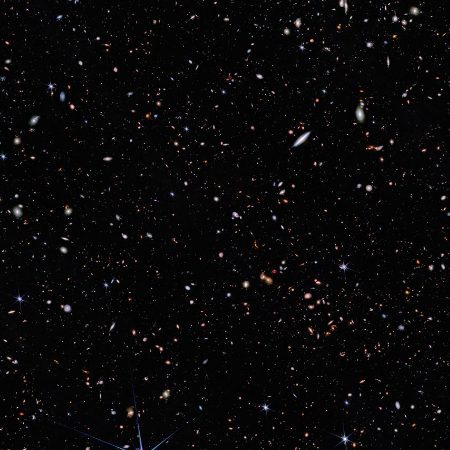
Are These Objects Still There?
Besides the thought of looking back in time, there’s one other mind-bending aspect to astronomy that’s sometimes overlooked: some of these sights may no longer be there! We know that objects move through space (for example, our own Sun is orbiting the center of the Milky Way), and it’s an established fact that the universe is expanding. Like dots on an inflating balloon, many of the galaxies are moving away from one another.
So when we look back at a galaxy like JADES-GS-z13-0, we’re not only seeing it as it was 13.4 billion years ago, but also where it was 13.4 billion years ago. Like so many other things, it’s moving through space and is no longer where we now see it.
In fact, when astronomers take into account the expansion of the universe, JADES-GS-z13-0 is now estimated to be a whopping 33 billion light-years away. We may still see it, but we’re seeing it where it was and not where it is. It’s almost like looking at the shadow of the galaxy as it drifts away.
Besides this, some of the things we can see simply might not exist anymore. For example, the star Betelgeuse is 643 light-years away, so we see it as it was in the late 14th century. When the star started to dim in early 2019, we were witnessing events that actually occurred in the year 1376.
Betelgeuse is nearing the end of its life and could, theoretically, go supernova at any time. However, when its light takes 643 years to reach us, it’s entirely possible that it’s already exploded. For all we know, Betelgeuse could have exploded in the year 1476, but we won’t know about it for another 100 years. Instead of the star, there might only be its ever-expanding shell of gas and dust debris. That shell could be there, but we have yet to see it.
Image Credit: Astrobackyard / Trevor Jones
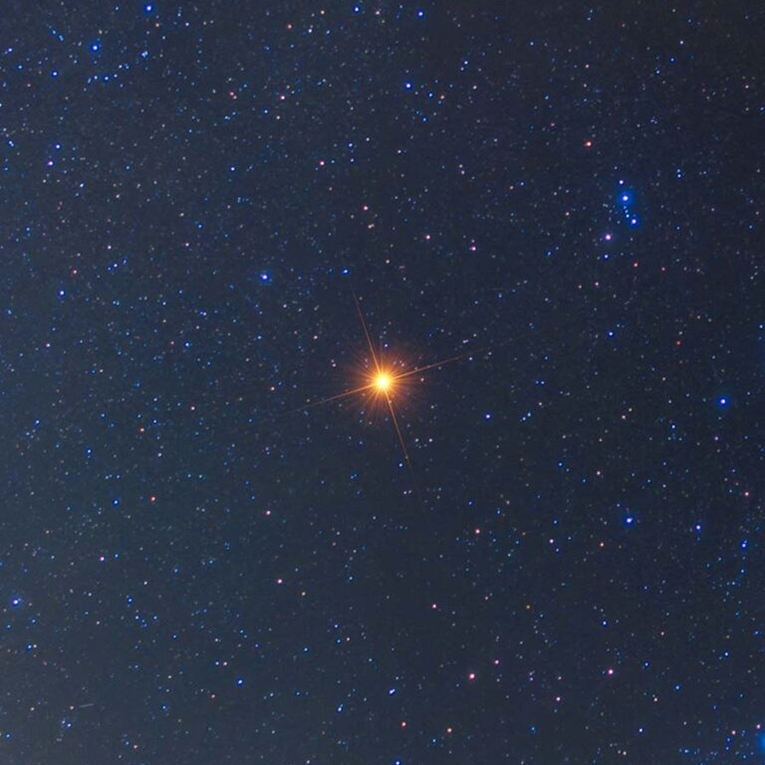
Just as we’re seeing the shadows of galaxies as they drift away, in some cases, we’re looking at the ghosts of stars that have long since died. We may have looked up at the stars for thousands of years, but it would seem the universe is reluctant to let us see everything, everywhere, all at once!

Learn More
Interested in learning more about telescopes and astronomy? Not sure where to begin? Check out our Astronomy Hub!




